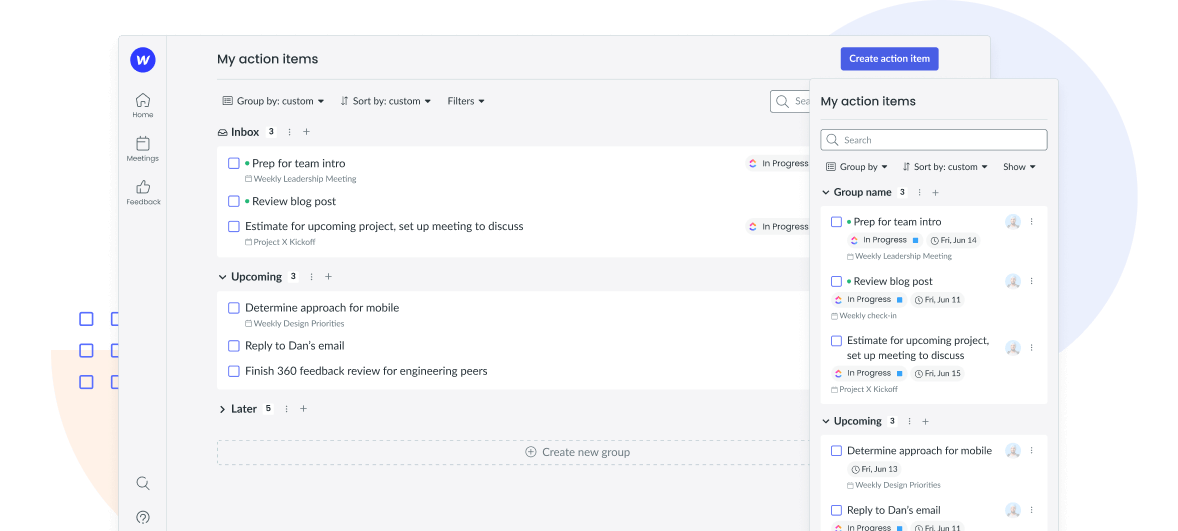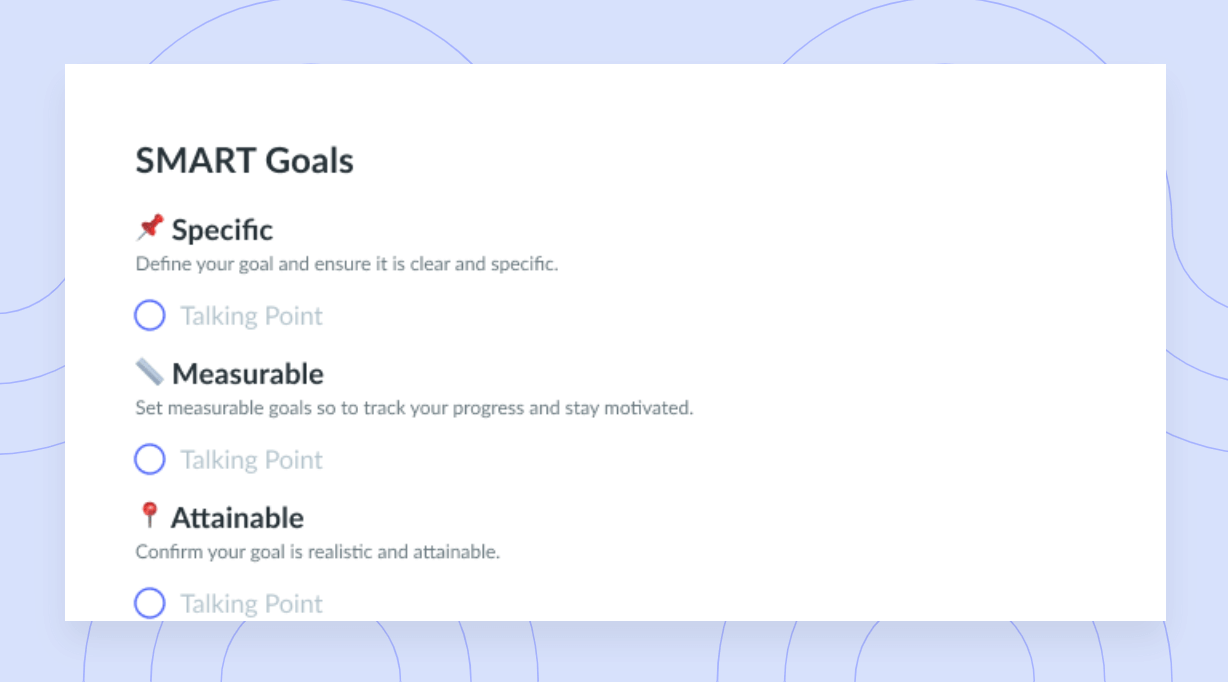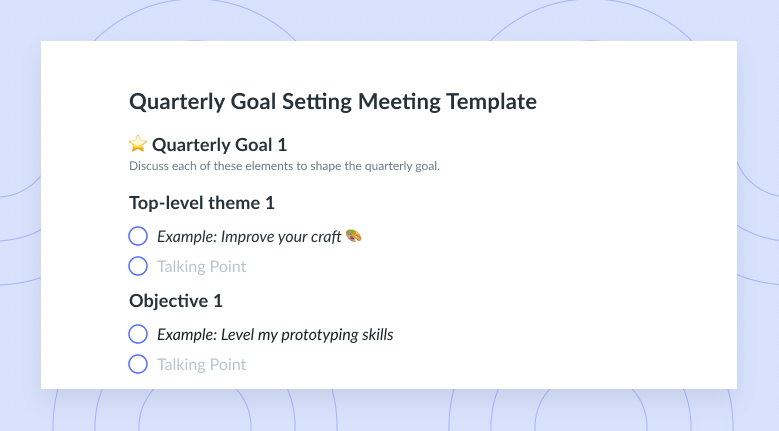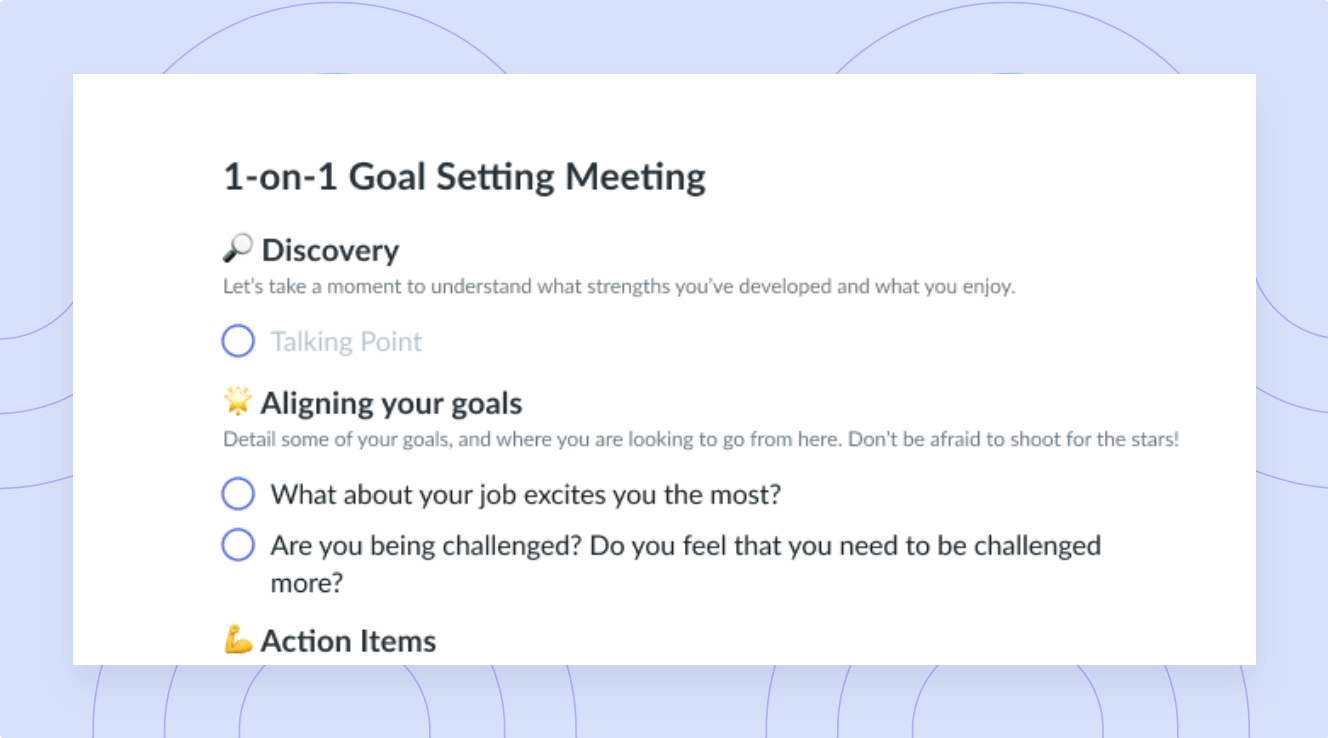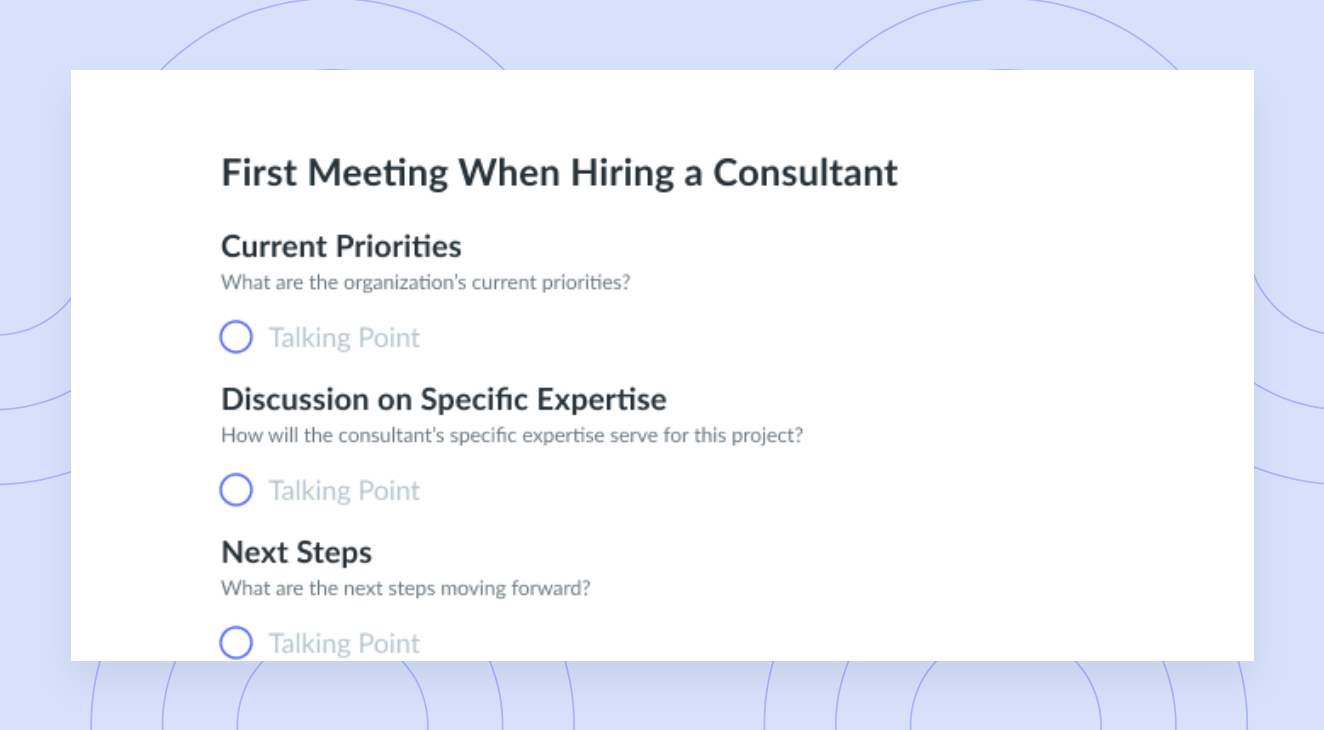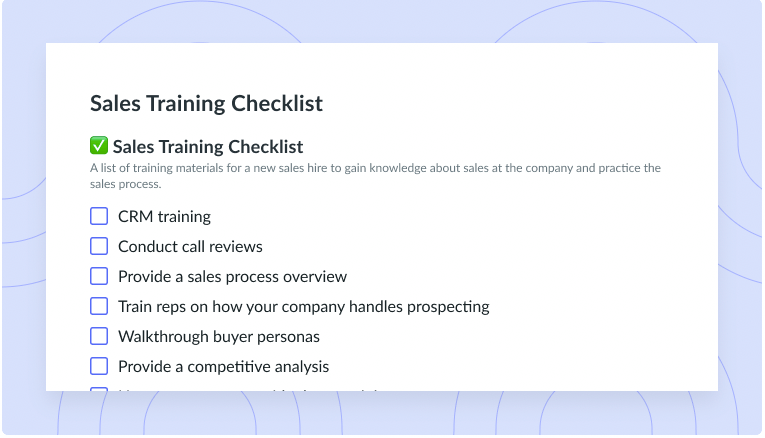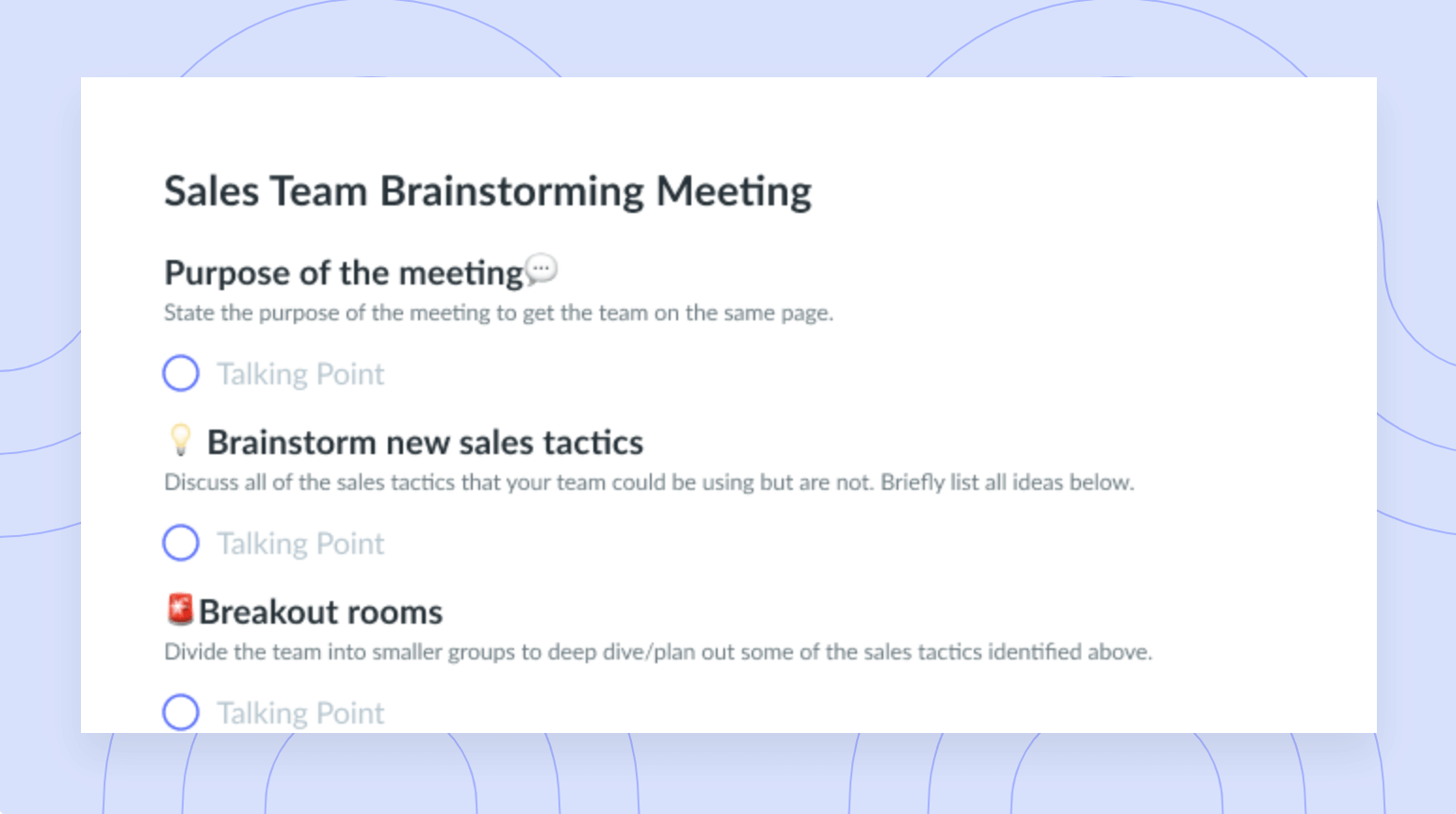How to Set Productivity Goals for 2024 [+ Examples]
Increase your value by setting productivity goals that improve your team’s time management, efficiency, and performance.
Think about the last time you told someone you had a not-so-great workday. What were some other words you would use to describe you and your team that day—maybe “unproductive”?
If your less-than-stellar moments at work come down to everyone not quite getting enough done, you’re in need of productivity goals. These are goals you set to increase the value you create during any constant unit of time. Setting them is a fast route to improving your team’s time management, efficiency, and performance. Here’s how to do it.
How to set productivity goals
It’s super easy to set productivity goals, and some of the steps are even fun! Here are some ways to go about shaping your goals.
- Protect your time
- Use the SMART goals framework
- Break down tasks into smaller actions
- Schedule your time
- Remain flexible and adaptable
- Regularly review progress
- Find motivators
- Use a task management tool
Protect your time
Maximizing your productivity is all about prioritizing your most important tasks and declining or automating less valuable ones. It also involves knowing how long each of your tasks will take.
Collectively, this is known as protecting your time, and learning how to do it is key to setting productivity goals. Only when you know how much value a task produces and in how much time can you start setting realistic, effective target outcomes. For example, it’s much easier to write one more article per workday when you cut an hour off meeting planning with Fellow’s AI-generated agendas.

Instantly build thoughtful meeting agendas
Harness the power of AI to save time, get inspired, and enable efficient meeting preparation. Get AI-generated suggested agendas, topics, and talking points right where your meetings happen.
Use the SMART goals framework
All great personal and team goals are specific, measurable, achievable, relevant, and time-bound—or, to use a common abbreviation, they’re SMART goals. Here are the questions to ask about each letter in SMART for your productivity goals:
- Specific: Which team members will work toward what outcome, and how?
- Measurable: How can you quantify this goal, and what numerical outcomes count as success?
- Achievable: What would it take to accomplish your goal? Do you have it, and can you get it if you don’t yet have it?
- Relevant: Does your goal align with your organization’s mission and vision statements, or client needs?
- Time-bound: Within what time frame can you realistically reach your goal?
Break down tasks into smaller actions
Improving productivity may feel like a less overwhelming task when you separate a big task into smaller ones. Creating a roadmap of project milestones and celebrating your team members’ wins along the way is a great way to pull this off. So is creating daily, weekly, or monthly tasks—or some of each—for you and your team. However you go about it, a step-by-step plan makes getting more done in less time a more realistic prospect.
Schedule your time
Managing your calendar effectively is among the best time management strategies for any team leader and their direct reports. It’s also a benefit for setting productivity goals—building out a weekly schedule can help your team achieve more high-value outcomes per week.
For example, suppose you’ve added all your team meetings to your calendar and see a totally open day on Thursday. That’s a great day to focus all your team members on their most important tasks. Creating a high amount of value in completing each task is the essence of increasing workplace productivity.
Remain flexible and adaptable
The best goals aren’t set in stone. In all likelihood, you’ll need to adjust them along the way. Maybe new client needs unexpectedly emerge, or a team member gets sick and takes time off, thus reshaping your task delegation. Learning flexibility and adaptability makes for stronger productivity goal setting.
Think about it like this: Murphy’s Law suggests that planning for the best and expecting a bit less than that is smart organizational practice. A productivity goal that aims a bit lower than where you actually want to be can leave a nice buffer for if things go wrong.
Regularly review progress
Since productivity goals ebb and flow, you’re best off tracking your progress toward them and adjusting them accordingly. A tool like Fellow can help provide the framework for this progress tracking.
Fellow’s objectives and key results (OKRs) and action items features allow you to set and record ideal outcomes for your team and divide the tasks you need to get there. At any time, you can look at your team’s action items to track everyone’s progress and then alter your goals as necessary. You’ll find the right balance of high productivity and a team that isn’t overworked, leading to more effective productivity goal setting.
Find motivators
Building small rewards into productivity goals can make you more likely to reach the finish line on time. Breaks, walks, snacks, phone time—anything can be a motivator within a productivity goal. Five minutes of social media time after an hour of interrupted work can make the destination look so much sweeter at the outset.
If an hour of nonstop work sounds too long, there’s always the Pomodoro method. This approach involves 5-minute breaks after 25-minute work sprints, and each of these sprint-and-break combinations is a Pomodoro. After four Pomodoros, you get an even longer 15- to 30-minute break. Since breaks are correlated with more productivity, incorporating the Pomodoro method into your goals can lead to more effective objectives.
Use a task management tool
Look back at the definition of SMART goals for a second. The “A” stands for “achievable,” but you can let it stand for “ambitious,” too. That said, your most ambitious goals are much more likely to pan out if you use task management software. With task management software, you make task delegation and prioritization, teamwide communication, and clear task organization easier. These processes also lead to your team doing more in less time—ultimately being more productive.
A task management tool like Fellow can help drive ownership, accountability, and performance with a centralized record of decisions and assigned tasks, bringing your most ambitious productivity goals more within reach.

Make every meeting productive
With Fellow, effectively delegate tasks, assign clear meeting action items, and sync them with your project management tools to ensure productivity and cross-functional alignment.
5 examples of productivity goals for 2024
You now have all the skills you need to start putting together meaningful productivity goals that drive action. These examples of productivity goals should also help you set your own.
- Time management goal
- Skill development goal
- Work-life balance goal
- Organizational goal
- Quality improvement goal
Time management goal
Example goal: This month, spend one more hour per week on email marketing copy. Free up this hour by spending half an hour less each week on generating reports and manually sending marketing emails.
Why it works: With this goal, you know exactly what you want to achieve, over what period, and how. Plus, it’s directly relevant to your marketing work, and it’s inherently time-bound. And with email marketing software tools, you can fully automate your reporting and email sending.
Skill development goal
Example goal: Successfully complete a self-paced online course to prepare for the certified public accountant exam over the next three months. Sit for and pass the exam to offer more accounting services within my organization and charge higher rates.
Why it works: This goal names the resources you’ll need to achieve a realistic, skill-based goal. It also relates your new skills to how you’ll bring more value to your organization.
Work-life balance goal
Example goal: Take all four weeks of my paid vacation time this year, as well as one extra week of unpaid vacation. Find $2,000 of freelance or side work over the course of the year to make up for the unpaid time off.
Why it works: Although it can be hard to ask for time off, the time itself is easy to carve out of your schedule. Plus, it’s always worth repeating that breaks and productivity are correlated. This means that all work-life balance goals double as productivity goals—and since this one is measurable and time-bound, it’s high-quality, too.
Organizational goal
Example goal: Implement task management software within the next three months and test it with all projects and tasks for two clients. Use the software’s automation features to complete three more tasks per client per week.
Why it works: It’s clear what you need to do to achieve this goal and by when—and what number of outcomes means success. Plus, since task management software is usually easy to set up, this goal is achievable. It’s also relevant since, when you’re wondering how to improve efficiency and productivity, task management software is often the answer.
Quality improvement goal
Example goal: Ask my supervisor for a manager performance review. Identify two key improvement areas, set objectives and key results for each, and achieve them within the next quarter.
Why it works: This goal is direct and clear, and you can certainly measure it. Plus, you have a preset amount of time to pull it off, and the outcome will be increased productivity. From checking all the SMART boxes to pulling more value out of your time at work, this goal does it all.
Parting advice
Any quantifiable, feasible goal you set to accomplish more within a certain period is a top-notch productivity goal for yourself and your team. Speaking of your team, you may fare best by receiving your team members’ input as you develop and set your goals. After all, they might know better than you whether the tasks you’re assigning are achievable, which is key to coming up with SMART goals. Use Fellow to streamline goal-setting meetings, track action items, and maximize productivity!

